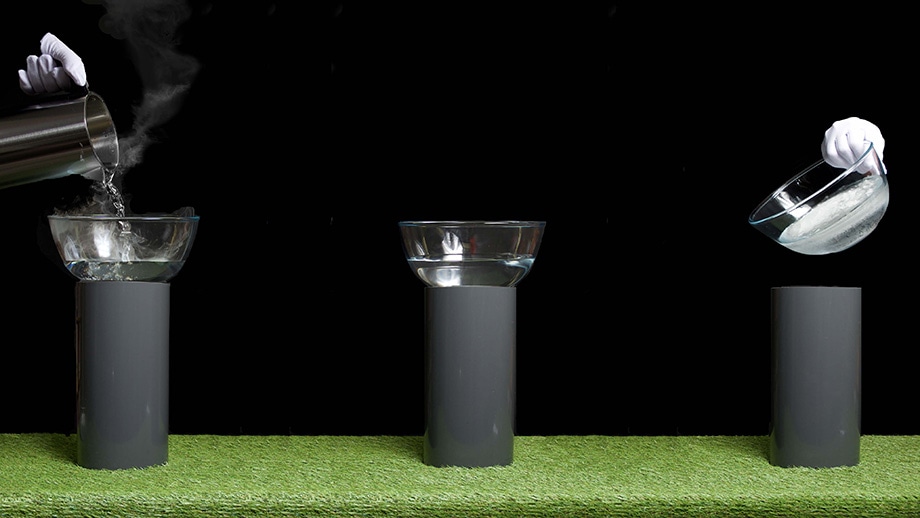Apr 22 2019
Physicists at the University of Zurich (UZH) have created a remarkably simple device that permits heat to flow momentarily from a cold to a warm object without the need for an external power supply. Fascinatingly, the process primarily seems to contradict the central laws of physics.
 Theoretically, this experimental device could turn boiling water to ice, without using any energy. (Image credit: Andreas Schilling, UZH)
Theoretically, this experimental device could turn boiling water to ice, without using any energy. (Image credit: Andreas Schilling, UZH)
If a teapot of boiling water is placed on the kitchen table, it will slowly cool down. However, its temperature is not anticipated to drop below that of the table. It is precisely this daily experience that describes one of the fundamental laws of physics – the second law of thermodynamics – which defines that the entropy of a closed natural system must expand over time. Or, more simply stated: Heat can flow by itself only from a warmer to a colder object and not from colder to warmer object.
Cooling below room temperature
The results of the latest experiment performed by the research team of Prof. Andreas Schilling in the Department of Physics at UZH seem to be challenging the second law of thermodynamics. The scientists succeeded in cooling a nine-gram piece of copper from over 100 °C to considerably below room temperature without using an external power supply.
Theoretically, this experimental device could turn boiling water to ice, without using any energy.
Andreas Schilling, Professor, Department of Physics, University of Zurich (UZH).
Creating oscillating heat currents
To realize this, the scientists used a Peltier element, a component usually used, for instance, to cool minibars in hotel rooms. These elements can change electric currents into temperature differences. The scientists had already used this type of element in earlier experiments, in connection with an electric inductor, to develop an oscillating heat current in which the flow of heat between two bodies continually changed direction. In this situation, heat also temporarily flows from a colder to a warmer object so that the colder object is further cooled down. This type of “thermal oscillating circuit” in effect has a “thermal inductor”. It operates in the same way as an electrical oscillating circuit, wherein the voltage vacillates with a continuously changing sign.
Laws of physics remain intact
So far, Schilling’s team had just worked these thermal oscillating circuits using an energy source. The scientists have currently demonstrated for the first time that this kind of thermal oscillating circuit can also be worked “passively”, i.e. without external power supply. Thermal oscillations still took place and, after a while, heat flowed directly from the colder copper to a warmer heat bath with a temperature of 22 °C, without being momentarily changed into another form of energy. Regardless of this, the authors were also able to demonstrate that the process does not really refute any laws of physics. To verify it, they considered the variation in entropy of the entire system and exposed that it increased with time – fully in keeping with the second law of thermodynamics.
Potential application still a long way off
Although the team noted a difference of just about 2 °C compared to the ambient temperature in the experiment, this was largely because of the performance limits of the commercial Peltier element used. According to Schilling, it would be possible in theory to realize cooling of up to -47 °C under the same environments, if the “ideal” Peltier element – yet to be conceived – could be used: “With this very simple technology, large amounts of hot solid, liquid or gaseous materials could be cooled to well below room temperature without any energy consumption.”
The passive thermal circuit could also be used as frequently as preferred, without the need to attach it to a power supply. However, Schilling confesses that a large-scale application of the method will still need a lot of time. One reason for this is that the Peltier elements presently available are not capable enough. Additionally, the existing set-up requires the use of superconducting inductors to curtail electric losses.
Established perceptions challenged
The UZH physicist considers the work more noteworthy than a simple “proof-of-principle” study: “At first sight, the experiments appear to be a kind of thermodynamic magic, thereby challenging to some extent our traditional perceptions of the flow of heat.”